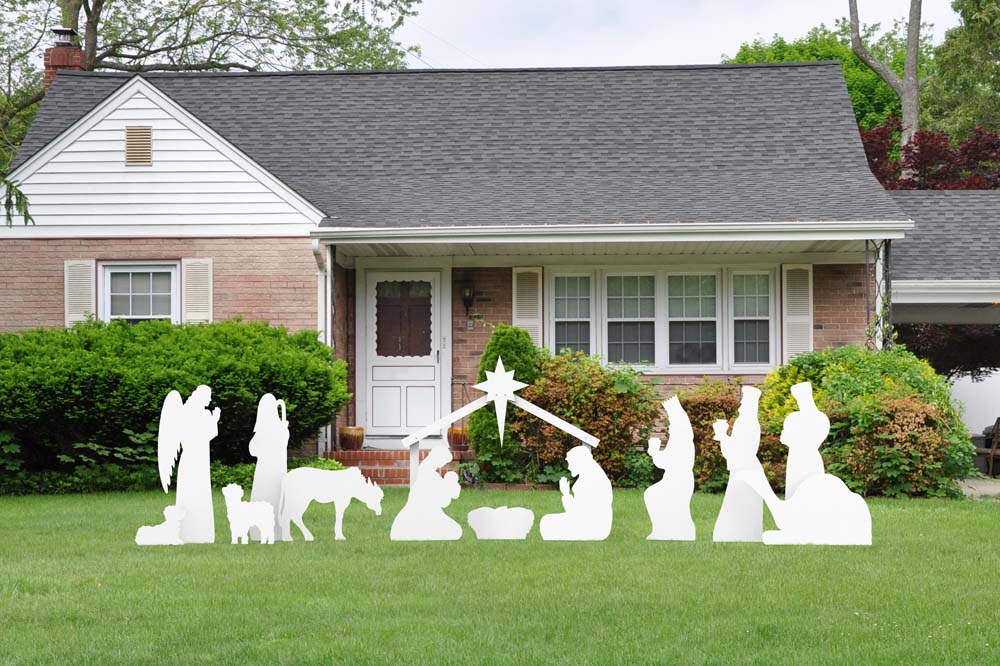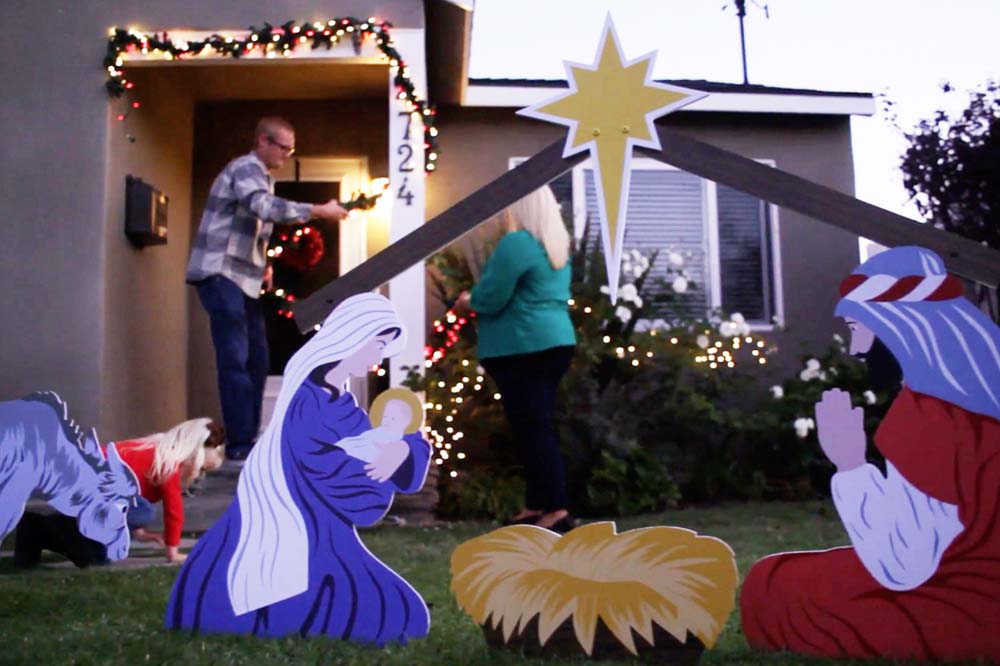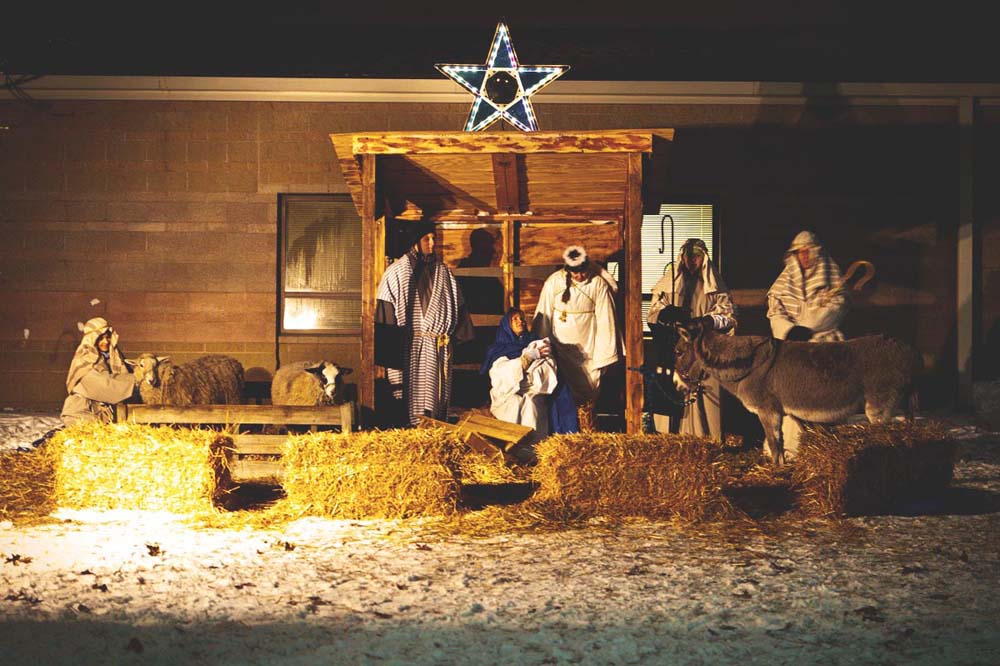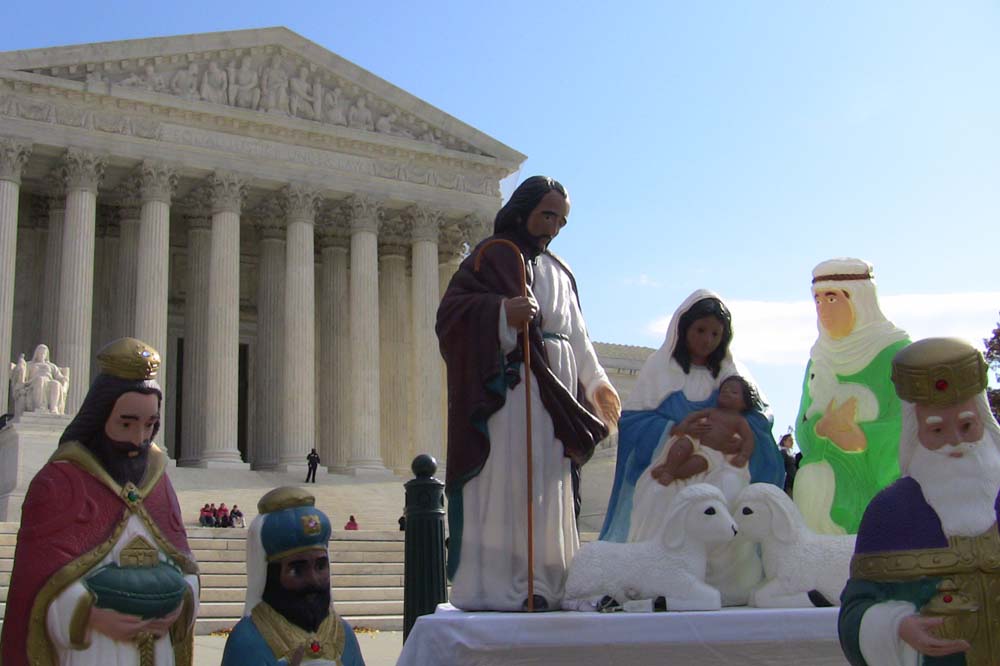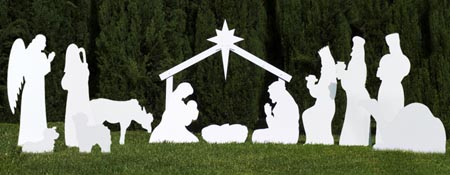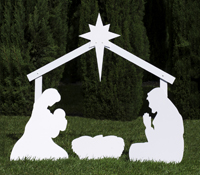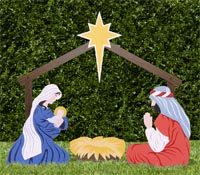University of Dayton’s Unparalleled Creche Collection
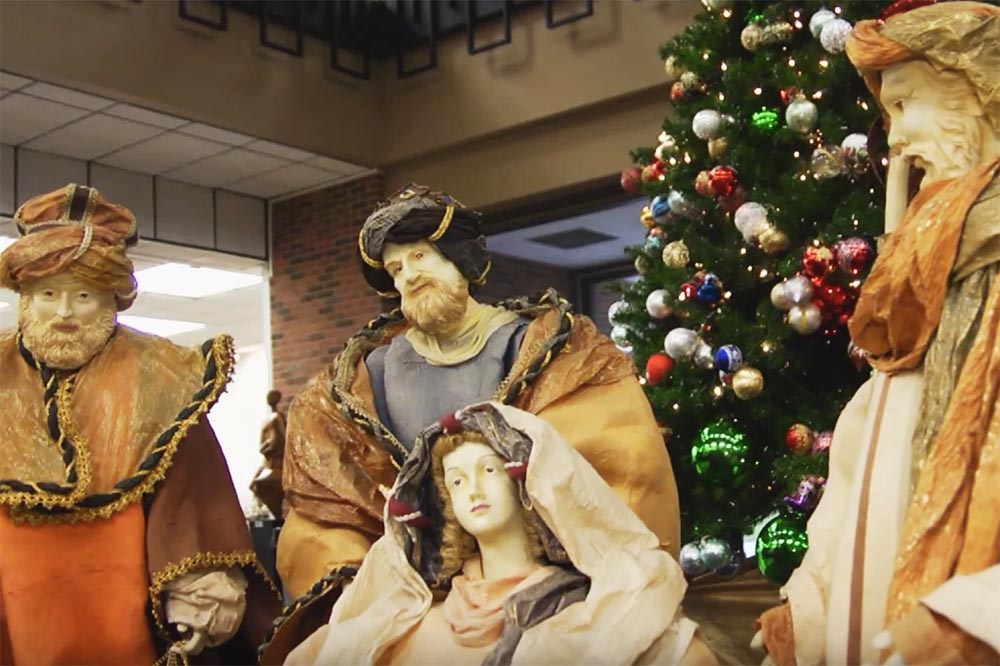
For three decades, the University of Dayton’s Marian Library has featured a collection of nativity sets from around the world. Today it is one of the largest – if not the largest – nativity collections in the United States.
Ranging from hand-made paper sets from Germany circa 1862 to the recent Hipster Nativity Set, which features Joseph taking a selfie of the Holy Family and Wise Men carrying boxes from Amazon.com, the collection features some 3,500 nativity sets from more than 100 countries.
“Everyone can relate to something in the collection,” says Michele Devitt, curatorial assistant and volunteer coordinator. “Regardless of your age or your religious background, everyone has a level of appreciation… It is a universal subject matter, and people are touched by it.”
Michele began working with the collection as a volunteer in 2002 and joined the staff five years ago. She supervises a group of 25 active volunteers, who logged 6,500 hours last year as docents and as caretakers of the collection.
In addition to the 20 to 30 sets that are display at any one time, the library loans out other sets each year to local museums, churches, schools and other organizations over the Christmas season. The sets are fragile, so each loaned piece must be carefully wrapped and packaged for safe travel.
When they are returned, they are then unpacked, cleaned and repaired, if needed, and then repackaged for storage. It is a time-consuming process, but Michele says it is a labor of love. She points out that many of the volunteers are retired people who enjoy the camaraderie of working together on the project.
Each year, on the Saturday after Thanksgiving, the annual Christmas exhibition, called “At the Manger,” begins with a free open house, featuring music, refreshments, activities and craft projects for children. The exhibition runs through mid-January.
Each year’s exhibition has a theme, with the 2017 theme set as African nativities.
“It is wonderful how nativity sets reflect the culture where they are made,” says Michele. “We have many carved sets from Africa; some are very detailed, and some are very colorful.”
The African sets are unique in that they feature people with African facial features as well as African animals. One of the African sets is made entirely out of Coca-Cola cans.
As a former art teacher, Michele says she is inspired by the artistry of the different sets in the University of Dayton collection. “I tend to notice the craftsmanship and the artistic endeavor of each piece,” she comments.
One of her favorite nativity sets, which was on display last year as part of that year’s Mexican theme, features clay figures adorned with tiny beads that are affixed with beeswax.
“It is so meticulously done and painstakingly detailed,” she explains. “The artist easily put it 100 hours or more.”
Some of her other favorite sets were created by Don Smith, a Marianist Brother who resides at Mount St. John in Dayton and who specializes in “Raku,” an Asian form of glazing and firing clay.
The popular annual nativity exhibition had a humble beginning. In 1997, Rev. Johann Roten, S.M., director of research and special projects for Marian Library and an internationally known authority on Mary, the mother of Christ, began placing small crèches on top of bookcases and among the stacks in the Marian Library.
According to Michele, both staff members and library visitors alike were delighted with the additions and suggested they be placed in a more formal display.
The idea took off, and today, nearly 5,000 people visit the exhibition each year. It has become a family tradition in Dayton, and people from all over the U.S. and from other countries make a holiday visit to the library. With a new theme each year, and with about a dozen new sets added to the collection each year – crèches from Europe and America and the rest of the world – there is always something new to see and appreciate.
“In a very real way, we are sharing God’s love with people,” says Michele. “[The collection] touches their hearts.”
For more information on the University of Dayton’s nativity collection, visit their website here.


